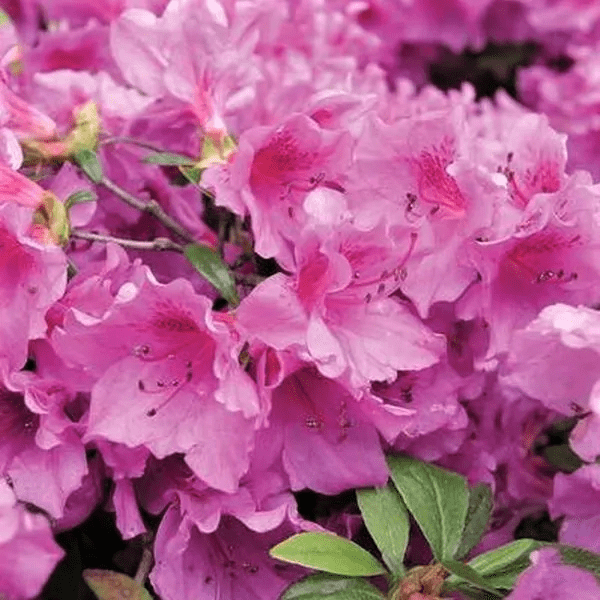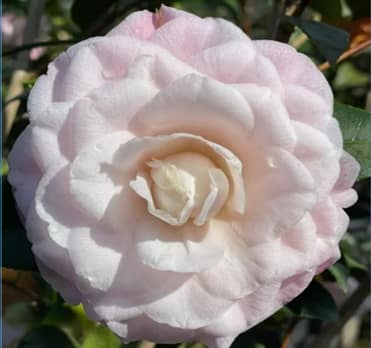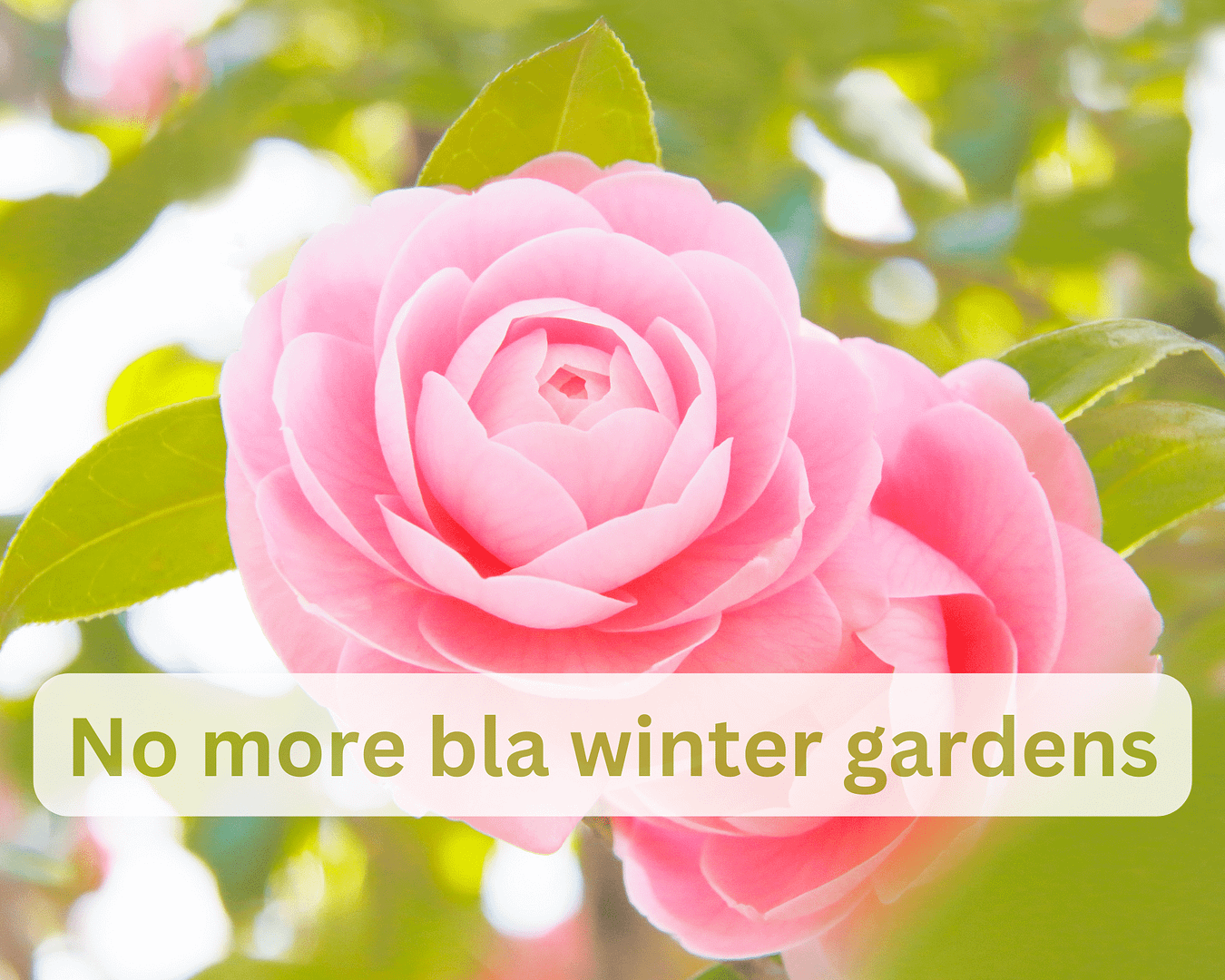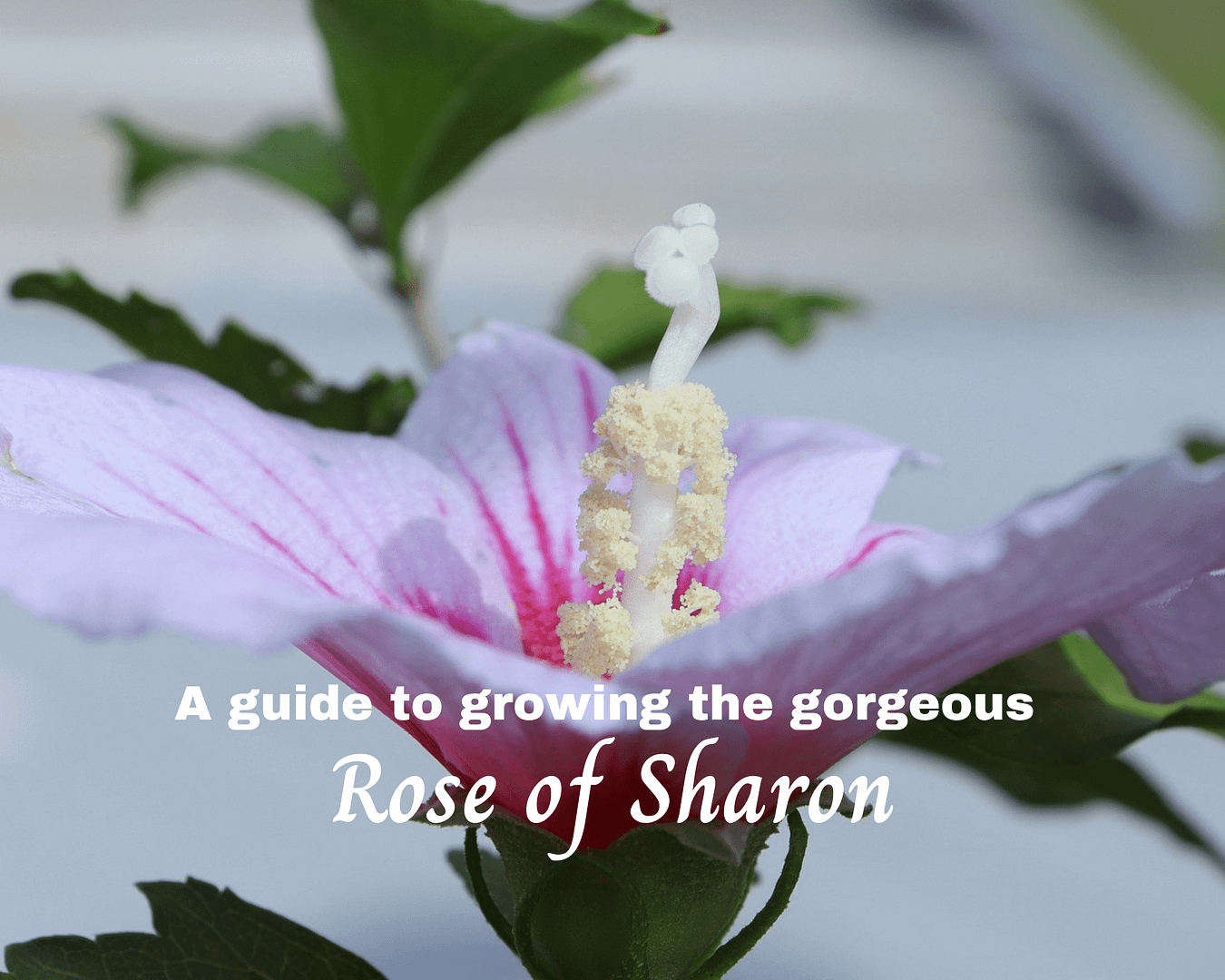This post may contain affiliate links. As an Amazon Associate we earn from qualifying purchases.
Winter interest shrubs add so much to the garden during a season when it is sorely needed.
Landscapes don’t have to be bleak from late fall until spring. Hardworking, evergreen, cold-hardy shrubs can lend color and texture to your yard.
Some will even offer you gorgeous flowers when the weather warms up.
Let’s take a look at how you can add some sizzle to your garden, even if it’s frigid out there.
Rhododendron For the Winter Garden

When seeking out the best winter interest shrubs, why not consider one of the most gorgeous and popular? With more than 1,000 species, the Rhododendron genus has much to offer the winter garden. They can be deciduous or evergreen, depending on the species.
One of the most popular types of rhododendron is the azalea. These too are either deciduous or evergreen. We recommend ‘Formosa,’ (Rhododendron indica ‘Formosa’) especially if you crave pink in the garden.
When looking for cold-tolerant evergreens to take you through the winter and explode into color in spring, consider rhododendrons and azaleas.
Hardiness: Hardy to USDA zones 4 through 8. Find your zone here.
Size in maturity: Sizes vary according to cultivar. Encore Azaleas grow from 4.5 to 5 feet in height. Dwarf azaleas, on the other hand, grow 2 to 3 feet tall.
Light and water requirements: Partial shade. Water when the top 3 inches of soil is dry.
Toxic? Toxic to Dogs, Cats, Horses. “Ingestion of a few leaves can cause serious problems … Clinical effects typically occur within a few hours after ingestion,” according to the experts at the American Society for the Prevention of Cruelty to Animals (ASPCA).
Shop for gorgeous rhododendrons and azaleas online at Nature Hills Nursery.

Camellia: Talk about winter interest shrubs!
You’ll fall in love with the camellia’s glossy green leaves and then go head-over-heels when it blooms. Some call the camellia the “perfect” flower.
With hundreds of species and thousands of hybrids, you’ll have no problem finding one that is perfect for your landscape.
The most common for home gardening is Camellia sasangua and C. japonica.
Hardiness: Depending on the species, camellia is generally hardy in USDA Zones 6 through 9. Find your zone here. Some C. japonica species and hybrids can tolerate temperatures between 0 and minus 5 degrees Fahrenheit.
Size in maturity: Height: 10 ft. to 13 ft. Width 5 ft. to 10 feet.
Light and water requirements: Plant your camellia in shade or partial shade and protect it from winds. Keep in mind, however, that flowering may be curtailed in deep shade. Keep the soil moist, but not soggy.
Toxic? Nope.
Pyracantha Adds Pops of Color to the Winter Garden
Pyracantha (Pyracantha spp.) and the winter holidays just seem to be made for one another. Also known as firethorn, this evergreen shrub bears small berries all winter long.
Although the varieties with red berries are the most common, you can also find pyracantha that boast orange, white and yellow berries.
Hardiness: Depending on species, pyracantha is generally hardy in USDA Zones 6 through 9 and temperatures as low as negative 10 degrees Fahrenheit.
Size in maturity: Pyracantha can grow to a height of 15 feet and 6 to 8 feet wide.
Light and water requirements: Grow pyracantha in full sun to partial shade and provide water to keep the soil consistently moist in spring through fall. Allow the top of the soil to dry in winter.
Toxic? One of the questions many gardeners have is about the toxicity of the berries. There are no studies that prove the berries to be toxic to either humans or our animals. However, if we ingest too much (“large amounts”) we’ll get a stomach ache. Read more at Poison.org.
Arborvitae May Just Be The Ideal Winter Interest Shrub
Most gardeners are familiar with the common, pyramid-shaped arborvitae (Thuja occidentalis) Although they’re lovely and serve many landscaping problems, we prefer the compact, “globe” types.
In fact, the dwarf, evergreen varieties are so versatile, you can use them just about anywhere. Gardening experts at Southern Living magazine suggest you take a look at the ‘Tater Tot™’ and ‘Mr. Bowling Ball’ cultivars.
Hardiness: Cold tolerance is cultivar-dependent, but in general, you’ll find globe arborvitae hardy to USDA zones 3 through 7. Find your zone here. According to the experts at Missouri Botanical Garden, ‘Danica’ and ‘Hetz Midget‘ can be grown in zone 2.
Size in maturity: Dwarf arborvitae grow from 12 to 24 inches in height.
Light and water requirements: For the fullest shrub, grow the arborvitae in full sun. These guys are intolerant of dry soil. Keep the soil evenly moist, but not saturated.
Toxic? Arborvitae is toxic for horses. All parts of the plant contain Thujone, a neurotoxin.

Daphne: The Fragrance is Amazing
Just when you think you’ve read the entire pile of seed catalogs, twice, along comes something to break that late winter malaise: Daphne (Daphne odora).
With a nickname like “winter daphne,” it should come as no surprise that this plant can tolerate very cold temperatures. In fact, Daphne odora shakes them off and produces blooms in January or February.
The flowers are reminiscent of Ixora, or the star flower as it’s commonly known, with a very important exception – their scent will make you feel like it’s mid-spring.
Hardiness: USDA Hardiness Zones 7 through 9
Size in maturity: 3 to 4 feet in height
Light and water requirements: This one does well in full sun and partial shade. Allow the soil to dry out before watering.
Toxic? All parts of the plant are toxic to humans and domestic animals.
`

American Beautyberry
American beautyberry (Callicarpa americana)is in the Lamiaceae family. This means that it is closely related to sage, mint and other herbs. A deciduous shrub, it grow from 4 to 8 feet in height and 4 to 6 feet in width.
It made our list for its Small pink flower clusters that give way to tiny, amazingly gorgeous purple fruit. Try to resist cutting them for indoor décor as they are among the list of critical foods for the Northern Bobwhite and other birds.
Hardiness: The beauty berry should be grown in USDA Hardiness Zones 6 through 11.
Size in maturity: 4 to 8 feet in height and 4 to 6 feet in width.
Light and water requirements: Grow the American beautyberry in full sun or partial shade if you live in one of the nation’s warmer regions. Provide the beautyberry with moist soil. It will tolerate a bit of drought when established, but very often it will cast off its berries. About an inch of water a week, if it doesn’t rain, is what the experts at Missouri Botanical Gardens recommend.
Toxic? No





